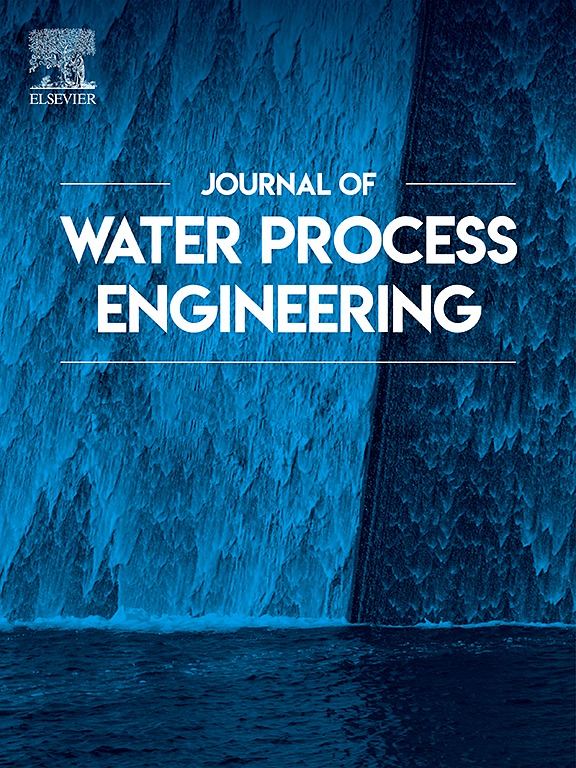Optimizing organic pollutant removal from hydrazine hydrate waste brine through thermal activation of sodium persulfate assisted by response surface methodology
IF 6.3
2区 工程技术
Q1 ENGINEERING, CHEMICAL
引用次数: 0
Abstract
Addressing the environmental impact of toxic waste from hydrazine manufacturing is crucial due to its severe implications for ecosystem health. This study focused on optimizing the removal of organic pollutants from hydrazine hydrate waste brine. By utilizing thermally activated sodium persulfate (Na2S2O8), a mathematical model was developed that links operational variables—temperature, Na2S2O8 concentration, pH, and reaction time—with the efficiency of total organic carbon (TOC) removal. The application of response surface methodology (RSM) incorporating the Box-Behnken Design (BBD) facilitated the identification of optimal conditions: Na2S2O8 concentration of 4.22 g·L−1, pH of 9.8, temperature of 90.0 °C, and reaction time of 180 min. These conditions achieved a TOC removal efficiency of 86.6 %, closely matching the actual experimental efficiency of 87.3 %. This study not only validates the effectiveness of RSM in refining the Na2S2O8 treatment process but also underscores the efficiency of thermally activated Na2S2O8 in purifying water from organic pollutants. The findings offer valuable insights into environmental management and endorse the sustainable development of waste treatment technologies.

求助全文
约1分钟内获得全文
求助全文
来源期刊

Journal of water process engineering
Biochemistry, Genetics and Molecular Biology-Biotechnology
CiteScore
10.70
自引率
8.60%
发文量
846
审稿时长
24 days
期刊介绍:
The Journal of Water Process Engineering aims to publish refereed, high-quality research papers with significant novelty and impact in all areas of the engineering of water and wastewater processing . Papers on advanced and novel treatment processes and technologies are particularly welcome. The Journal considers papers in areas such as nanotechnology and biotechnology applications in water, novel oxidation and separation processes, membrane processes (except those for desalination) , catalytic processes for the removal of water contaminants, sustainable processes, water reuse and recycling, water use and wastewater minimization, integrated/hybrid technology, process modeling of water treatment and novel treatment processes. Submissions on the subject of adsorbents, including standard measurements of adsorption kinetics and equilibrium will only be considered if there is a genuine case for novelty and contribution, for example highly novel, sustainable adsorbents and their use: papers on activated carbon-type materials derived from natural matter, or surfactant-modified clays and related minerals, would not fulfil this criterion. The Journal particularly welcomes contributions involving environmentally, economically and socially sustainable technology for water treatment, including those which are energy-efficient, with minimal or no chemical consumption, and capable of water recycling and reuse that minimizes the direct disposal of wastewater to the aquatic environment. Papers that describe novel ideas for solving issues related to water quality and availability are also welcome, as are those that show the transfer of techniques from other disciplines. The Journal will consider papers dealing with processes for various water matrices including drinking water (except desalination), domestic, urban and industrial wastewaters, in addition to their residues. It is expected that the journal will be of particular relevance to chemical and process engineers working in the field. The Journal welcomes Full Text papers, Short Communications, State-of-the-Art Reviews and Letters to Editors and Case Studies
 求助内容:
求助内容: 应助结果提醒方式:
应助结果提醒方式:


